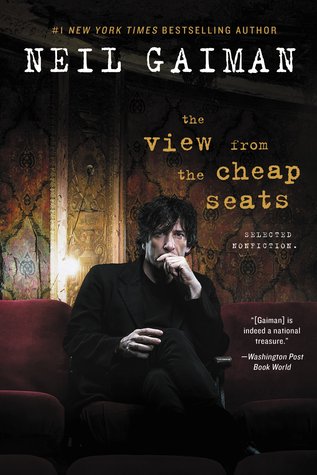 The View from the Cheap Seats: Selected Nonfiction by Neil Gaiman
The View from the Cheap Seats: Selected Nonfiction by Neil Gaiman Formats available: hardcover, paperback, ebook, audiobook
Pages: 544
Published by William Morrow on May 31st 2016
Purchasing Info: Author's Website, Publisher's Website, Amazon, Barnes & Noble, Kobo, Bookshop.org
Goodreads
An enthralling collection of nonfiction essays on a myriad of topics—from art and artists to dreams, myths, and memories—observed in Neil Gaiman’s probing, amusing, and distinctive style.
An inquisitive observer, thoughtful commentator, and assiduous craftsman, Neil Gaiman has long been celebrated for the sharp intellect and startling imagination that informs his bestselling fiction. Now, The View from the Cheap Seats brings together for the first time ever more than sixty pieces of his outstanding nonfiction. Analytical yet playful, erudite yet accessible, this cornucopia explores a broad range of interests and topics, including (but not limited to): authors past and present; music; storytelling; comics; bookshops; travel; fairy tales; America; inspiration; libraries; ghosts; and the title piece, at turns touching and self-deprecating, which recounts the author’s experiences at the 2010 Academy Awards in Hollywood.
Insightful, incisive, witty, and wise, The View from the Cheap Seats explores the issues and subjects that matter most to Neil Gaiman—offering a glimpse into the head and heart of one of the most acclaimed, beloved, and influential artists of our time.
My Review:
“Fiction is the lie that tells the truth” – This is a quote that Neil Gaiman seems to have adapted from Albert Camus’ version: “Fiction is the lie through which we tell the truth.”
A good bit of this collection is about the creation of that fiction, not just his own, but also other people’s. So we get a look into how the writer does his craft, but even more of a peek at what the writer thinks about other writers’ books that he has known and loved. And sometimes that’s about the books, and sometimes that’s about the writer, and most often it’s about the love.
As a librarian, I have to say that the entire first section of this collection just warms the proverbial cockles of my book-loving and book-pushing heart. Because in it, Gaiman basically lays out his love of books and bookstores and libraries for the entire world to see. And his expression of that love is absolutely lyrical. It’s a paean to libraries and a clarion call to save them all wrapped into one beautiful ball.
He also talks a lot about the books that shaped him, both as a person and as a writer. If the “Golden Age of science fiction is twelve” or thirteen, as the age varies depending on what story he is telling, then Gaiman was exposed at just the right moment. But even if you are not a lover of science fiction, his story of escaping into books as a child will resonate for any adult who has spent their life escaping from it in books. We all started out young.
As a writer, Gaiman began as a journalist (not unlike his friend, the late, much lamented Terry Pratchett) and moved from writing for other people to writing the stories that, as he says, he couldn’t keep inside. And the stories that he wanted to read. Along the way, he passed through comic books, fantasy, science fiction and horror. As many of the languages of myth-making as he could manage. In various pieces of this collection, there are essays that speak to one or more of those interests, with digressions into movies and music.
But whatever he is, or was, writing about (or in some cases speaking about) the author’s voice shines through. And that love. Love for the genre, love for the medium, and especially love for the power of words and the worlds they create.
Escape Rating A: Because this is a collection of essays and whatnot, I don’t actually need to read the entire thing to write a credible review. But I had so much fun reading it that I could not make myself stop.
Also, I recently listened to the beginning of Neverwhere, read by the author. As I read The View From the Cheap Seats, I could hear the author’s voice in my head, especially reading the speeches. It’s a very distinct authorial voice, and a surprisingly excellent voice for reading.
(Some authors are notoriously bad at reading their own work. Gaiman is emphatically not one of them.)
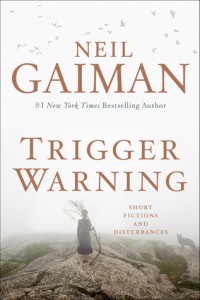 As an essay collection, while I wouldn’t say that it is uneven the way that last year’s short story collection, Trigger Warning, was, I would say that the appeal of the collection will depend on how closely the reader’s interests match the author’s.
As an essay collection, while I wouldn’t say that it is uneven the way that last year’s short story collection, Trigger Warning, was, I would say that the appeal of the collection will depend on how closely the reader’s interests match the author’s.
Anyone who loves books and reading AT ALL will enjoy the first section, Some Things I Believe. Because the author believes A LOT about the joy of reading to move us and the importance of bookstores and libraries and of simply READING.
But other parts of the collection reflect different tastes and interests. As someone who reads a lot of science fiction and fantasy, the essays in those sections, including the speeches, had plenty of resonance for this reader. The stories within the stories, the tropes that are referred to, the people being honored, are all ones that I am not just familiar with, but frequently also love. And occasionally have my own stories about.
And his writing about science fiction and fantasy and being both a reader and a writer echo my own experiences in the SF fan community.
His speech about Tulip Mania as it relates to the Comic Book Industry (Good Comics and Tulips: A Speech) should probably be read by anyone interested in the economics of fads and/or the bursting of false-demand economic bubbles.
At the same time, the sections where I’m not as invested, aren’t as interesting to me. My taste in music is different from the author’s. So while I find his essays on music interesting, they don’t move me in the same way that the ones on SF and fantasy do. They are excellently written, but don’t touch a place in my heart.
But so much of this collection does.





 Current Giveaways:
Current Giveaways: Blog Recap:
Blog Recap: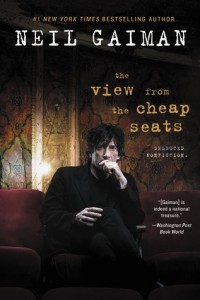 Coming Next Week:
Coming Next Week:







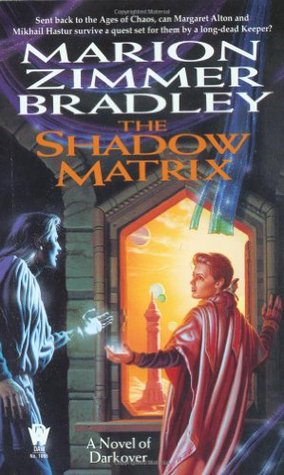 The Shadow Matrix by
The Shadow Matrix by 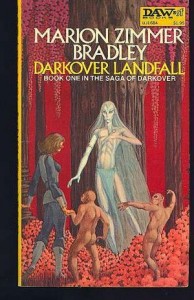 Escape Rating: B+. I’ll say it right up front: If you’ve not read a lot of other Darkover novels before this one, The Shadow Matrix will be almost incomprehensible to you. There’s backstory a-plenty: the politics of the Comyn, the madness of the Elhalyn family, laran and everything that goes with that, the Darkovans’ experiences with the Terrans, Lew Alton himself, the Shadow Matrix, and so, so much more. Names and terminology are thrown around willy-nilly, and you’re supposed to just know all that stuff.
Escape Rating: B+. I’ll say it right up front: If you’ve not read a lot of other Darkover novels before this one, The Shadow Matrix will be almost incomprehensible to you. There’s backstory a-plenty: the politics of the Comyn, the madness of the Elhalyn family, laran and everything that goes with that, the Darkovans’ experiences with the Terrans, Lew Alton himself, the Shadow Matrix, and so, so much more. Names and terminology are thrown around willy-nilly, and you’re supposed to just know all that stuff.  Undiscovered by
Undiscovered by  So thinking of Declan and Layne as 21st Century versions of Dathan Phoenix and Dr. Eos Rai from
So thinking of Declan and Layne as 21st Century versions of Dathan Phoenix and Dr. Eos Rai from  But this story is all Declan and Layne. He keeps her alive on an unexpected desert trek, and she pulls her own weight AND figures out all the puzzles. He knows just enough to provide the occasional clue, or more often just an intelligent listener to bounce things off of. But the archaeological mystery is all her show. As it should be.
But this story is all Declan and Layne. He keeps her alive on an unexpected desert trek, and she pulls her own weight AND figures out all the puzzles. He knows just enough to provide the occasional clue, or more often just an intelligent listener to bounce things off of. But the archaeological mystery is all her show. As it should be. Saddle Up (Hot Cowboy Nights #4) by
Saddle Up (Hot Cowboy Nights #4) by 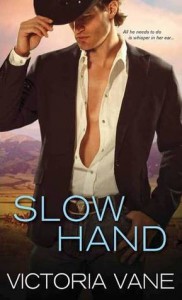 And even though this is the fourth book in the
And even though this is the fourth book in the 



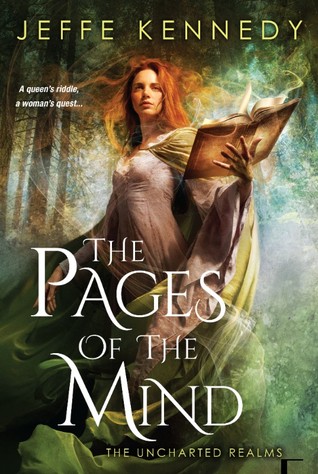 The Pages of the Mind (The Uncharted Realms #1; The Twelve Kingdoms #4) by
The Pages of the Mind (The Uncharted Realms #1; The Twelve Kingdoms #4) by 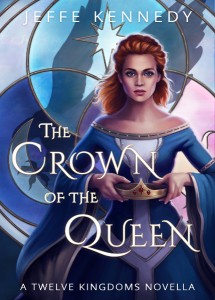 I have, for the most part, adored Jeffe Kennedy’s
I have, for the most part, adored Jeffe Kennedy’s 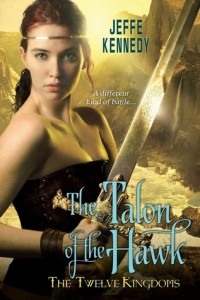 Dafne has always been an observer and recorder. That’s what librarians do. So Daphne is more surprised than anyone when Ursula tasks her with the position of ambassador, first to the island kingdom of Nahanau, and then to the court of Dasnaria. Nahanau has been damaged by the movement of the magical barrier that formerly surrounded the Tala, and Dasnaria is the home of Ursula’s lover Harlan. His people might ally with the Twelve, now Thirteen Kingdoms, or might attempt to conquer them instead. The Kingdoms are still recovering from the late King’s treachery and tyranny, Ursula needs to stave off that possible war.
Dafne has always been an observer and recorder. That’s what librarians do. So Daphne is more surprised than anyone when Ursula tasks her with the position of ambassador, first to the island kingdom of Nahanau, and then to the court of Dasnaria. Nahanau has been damaged by the movement of the magical barrier that formerly surrounded the Tala, and Dasnaria is the home of Ursula’s lover Harlan. His people might ally with the Twelve, now Thirteen Kingdoms, or might attempt to conquer them instead. The Kingdoms are still recovering from the late King’s treachery and tyranny, Ursula needs to stave off that possible war.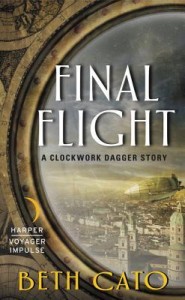 Blog Recap:
Blog Recap: Coming Next Week:
Coming Next Week: